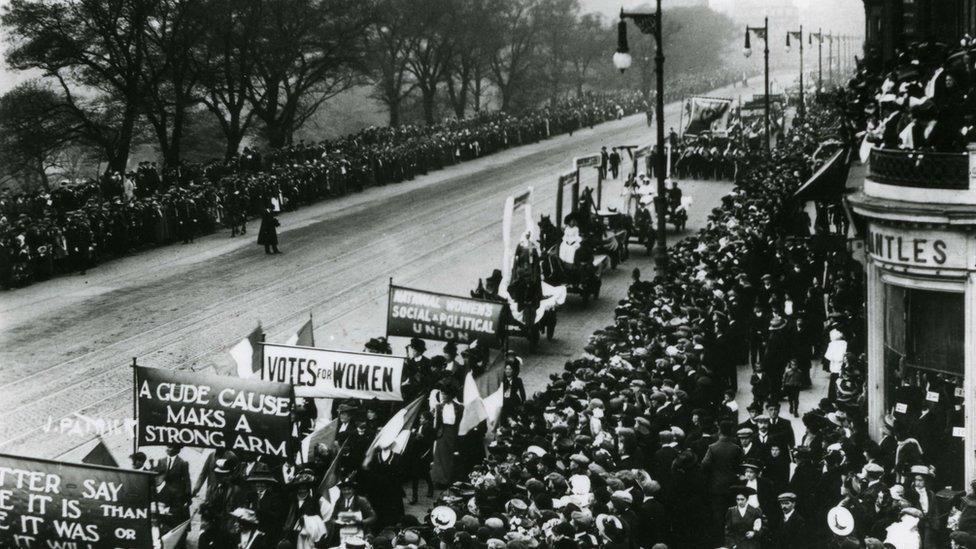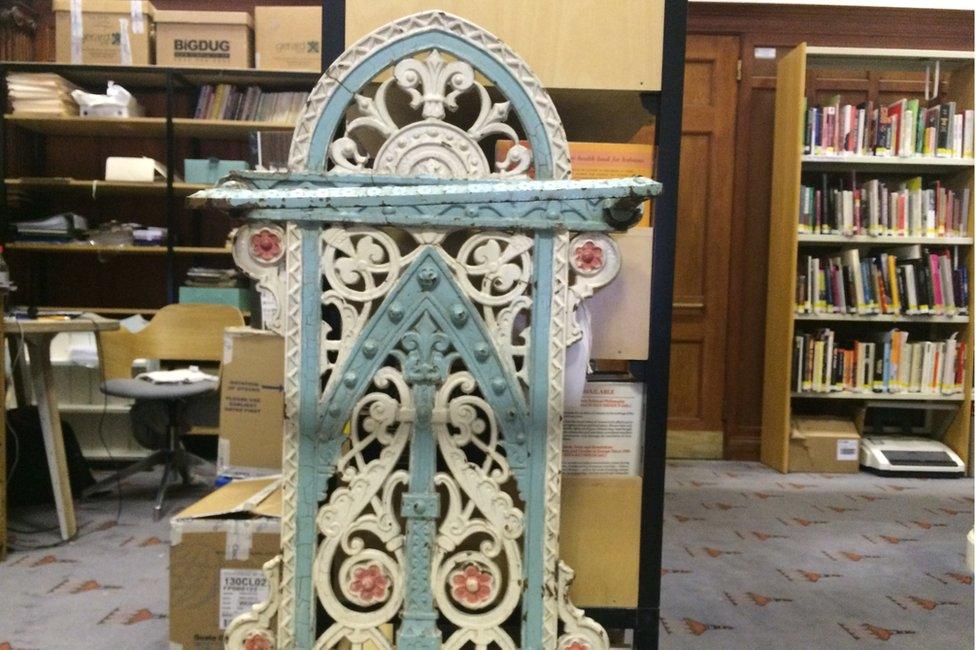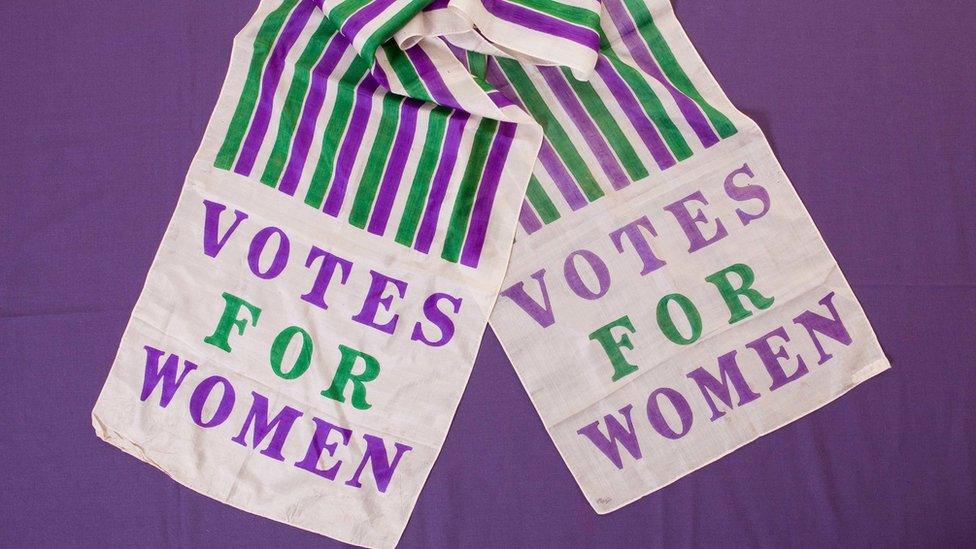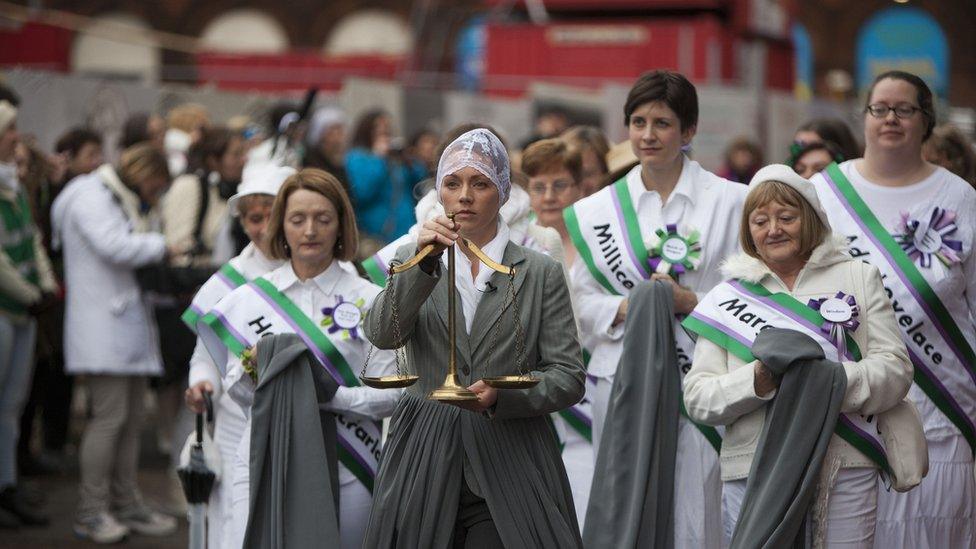The role of Scottish women in the suffragette movement
- Published

Women's franchise procession 1909
From throwing an egg at Winston Churchill, to a huge suffrage march in Edinburgh, to the horrors of force-feeding, Scotland's suffragettes and the more gradualist suffragists were an important part of the fight for women's votes.
As the film "Suffragette," opens in British cinemas there is renewed attention on that struggle, one in which Scotland played a vital part.

"For a long time the suffrage movement, as far as history is concerned was located in London and the national leadership was located there too," says Dr Norman Watson, a journalist and historian who has researched the suffragettes for 30 years.
But he points to the fact that Edinburgh had one of the earliest suffrage societies in the 1870s and by the period after 1905 Scotland was "punching above its weight" in the struggle for votes.
There were plenty of opportunities to confront the establishment with then prime minister Herbert Asquith having his constituency in Fife and Winston Churchill as an MP for Dundee.
He continues: "So with the militant women pledging to argue at every by-election at which the Liberal party stood because the Liberal party kept refusing them votes, this really catapulted the militancy episode into Scotland and all parts of Scotland were involved."

Umbrella stand painted by suffragettes who were imprisoned in Glasgow's Duke Street prison

Votes for women sash in colours of Women's Social Political Union
When Churchill came to stand in Dundee in 1908 he was followed by 27 of the national leaders of women's suffrage movements. At one point he even hid in a shed and tried to hold a meeting there.
There had been lots of campaigning for the vote towards the end of the 19th Century mainly using methods such at petitions, writing letters and badgering members of parliament.
That changed in 1903 with the establishment by the Pankhursts, and others, of the Women's Social and Political Union. A branch was opened in Glasgow in 1906 and by 1908 its Scottish headquarters had been opened in the city.
"At first the suffragettes tend to go down to England in order to commit some of the more militant acts," says Prof Sarah Pedersen of Robert Gordon University who is writing a book on the Scottish suffragettes.
"We don't really get much militant suffrage activity going on Scotland until a couple of years before the First World War but once they get started they do quite a lot of damage."
She points to the burning down of buildings, the grandstands at Ayr and Perth racecourses, the pouring of acid in post boxes to destroy the mail or burning the slogan 'votes for women' into the greens of golf courses with acid.
"One of the things to note is that they were very careful not to actually harm or kill anyone with all these fires, the places they set fire to were empty. What they were hoping for was that the landowners and the insurance companies would put pressure on the government to give women the vote," she continues.
A important point for the movement in Scotland was a big rally in Edinburgh in 1909. , external
It was led by the formidable Flora Drummond, riding on horseback. A key figure in the movement, she had grown up in Arran.
Edinburgh had a rather less positive claim to fame too though. It was here that the suffragette Ethel Moorhead became the first in Scotland to be force-fed, a practice which came later north of the border.
"There were two prisons in Scotland that did force feed," says Donna Moore of the Glasgow Women's Library.
"One was Edinburgh," she continues "although slightly reluctantly, but the main one was Perth and, in fact, when there was a royal visit to Perth there were signs outside saying welcome to your majesty's torture chamber in Perth prison."
Ms Moore is fascinated by the stories of suffragettes, stories which she feels deserve to be better known.

Earlier in the year a group of women took part in a public art event, called "March of Women", from the Glasgow Women's Library to Glasgow Green.
The idea was to celebrate women's history and achievements, past and present. The site was chosen as the green had been the venue for many rallies and marches by both suffragettes and suffragists.
World War One is often credited with bringing some women the vote in 1918. But Norman Watson says "in many respects we forget about the valuable work that the constitutionalists did, the non-militant women".
He reckons there were perhaps 100 plus militant suffragettes in Scotland, but thousands who were pursuing similar aims but by different means.
"My view is that by 1914 when the worst of the forcible feeding was happening I think we were heading towards the government giving in, and I actually think the women might have got the vote in 1916, two years before they did."